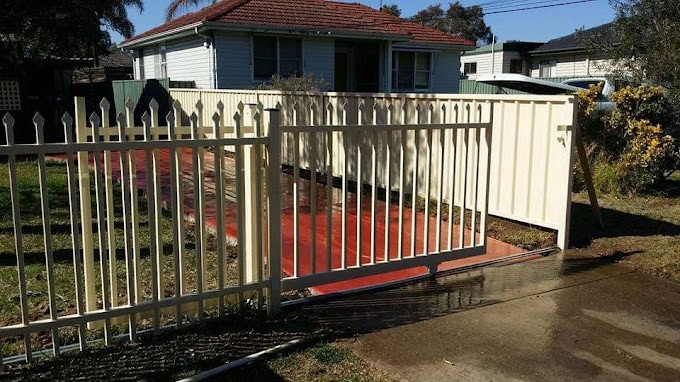Introduction
Timber fencing has actually always been a crowd favorite among house owners and contractors alike. However have you ever stopped to consider its environmental advantages? In an age where sustainability is at the forefront of everyone's mind, picking eco-friendly materials is more crucial than ever. This post will dig deep into The Ecological Advantages of Choosing Wood Fencing, analyzing how this natural resource can contribute positively to our world, while also being a trendy choice for residential and commercial properties.

When discussing fencing alternatives, it's important to understand that wood fences offer more than simply visual appeal. They provide a variety Check out here of environmental benefits that make them an exceptional choice for anybody wanting to improve their home sustainably. From enhanced biodiversity to carbon sequestration, lumber fencing might shock you with its green credentials.
So, let's dive into the nuts and bolts of why choosing timber fencing can be a beneficial decision for both your residential or commercial property and the environment.

The Ecological Benefits of Choosing Timber Fencing
Timber fencing sticks out not just for its appeal however likewise for its capability to support sustainable practices. When we consider the ecological benefits, we discover that timber fences contribute in several ways:
Sustainable Sourcing: The majority of wood utilized in fencing comes from managed forests where trees are replanted after gathering. This practice guarantees a continuous supply of wood and reduces deforestation.
Carbon Footprint Reduction: Timber functions as a carbon sink; it absorbs co2 from the atmosphere during its growth stage, helping to minimize greenhouse gases when used as a building material.
Biodegradability: Unlike metal or plastic alternatives, lumber is eco-friendly. When your fence reaches the end of its life cycle, it can disintegrate naturally without leaving hazardous residues behind.
Habitat Creation: Wood fences can work as habitats for various small creatures such as birds and bugs, contributing positively to local biodiversity.

Energy Efficiency: Building with lumber generally needs less energy compared to making metal or artificial products, hence saving energy resources throughout production.
Aesthetic Appeal: Timber's natural appearance blends flawlessly with gardens and landscapes, promoting a connection in between constructed structures and nature.
Now that we have actually covered some basic points about the environmental benefits of picking lumber fencing, let's check out extra aspects in detail.
Understanding Different Kinds of Timber Fencing
Timber Paling Fences
Timber paling fences are among the most popular options amongst property owners due to their adaptability and cost-effectiveness. These fences are normally made from dealt with pine or hardwood like merbau or jarrah, providing sturdiness while preserving an environment-friendly profile.
1. Features
- Cost-effective Easy installation Customizable heights
2. Benefits
- Excellent privacy Natural insulation properties
Picket Fences
For those seeking a classic appearance, picket fences stimulate beauty and nostalgia while also providing privacy and security without feeling too imposing.
1. Features
- Made from various kinds of timber Available in different designs (spaced vs close-set)
2. Benefits
- Enhances suppress appeal Eco-friendly option
Colorbond Fences
While not made from lumber, Colorbond fences are often compared due to their popularity in Australian homes. Nevertheless, they lack lots of ecological benefits that timber provides.
Comparison Table: Wood vs Colorbond Fences
|Function|Lumber Fences|Colorbond Fences|| ---------------------------|---------------------|------------------------|| Sustainability|High|Low|| Biodegradability|Yes|No|| Aesthetic Appeal|Natural|Industrial|| Maintenance Requirements|Moderate|Low|
Aluminium Blade & Slat Fences
These modern alternatives offer streamlined styles but come with greater ecological costs due to manufacturing procedures associated with aluminium production compared to timber.
Fencing Options by Fence Companies
When selecting your fencing option through a reliable fence company or contractors like "Fence installers Melbourne" or "Fencing contractors Melbourne," consider going over eco-friendly alternatives such as:
- Wood Fence Company items Metal Fence Company alternatives Automatic Gates
Retaining Walls & Their Ecological Impact
Retaining walls constructed from wood can stabilize soil disintegration while improving landscaping looks without damaging the environment compared to concrete options.
Environmental Advantages over Metal Fencing Options
Though metal fences like tubular metal fences provide toughness and security functions, they do not offer the exact same level of sustainability as wood alternatives:
1. Energy Consumption
Manufacturing metals requires significant energy which could otherwise be saved by selecting wood alternatives.
2. End-of-Life Disposal
Metal recycling is possible but frequently involves energy-intensive processes compared to simply composting old wood materials.
FAQs About Lumber Fencing
Q1: The length of time does wood fencing last?
A1: Depending on upkeep and wood type, great quality lumber fencing can last anywhere between 10-25 years!
Q2: What types of wood are best for fencing?
A2: Treated pine is common for cost-effectiveness; however, woods like merbau stand out for durability.
Q3: Do I require licenses for installing new fencing?
A3: Authorization requirements differ by area; always inspect regulations within your local council before installation!
Q4: Is wood fencing more costly than metal options?
A4: Preliminary expenses might be lower with metal; nevertheless, long-lasting savings through sustainability make wood an economical choice over time!
Q5: Can I paint my wood fence?
A5: Definitely! Use weather-resistant paint developed particularly for outdoor usage to improve longevity!
Q6: How do I keep my wood fence?
A6: Regular cleansing followed by periodic treatments (stains/sealers) will keep your fence looking great!
Conclusion
In summary, selecting timber fencing provides many environmental benefits that exceed those used by other products like metal or synthetic alternatives. Sustainable sourcing practices guarantee that our forests remain healthy while supplying us with this eco-friendly resource; moreover, wood's special ability to sequester carbon makes it an even more attractive choice in the middle of growing issues over climate change.
Whether you're working with recognized fence builders or engaging with regional "Fence installers Melbourne," comprehending these advantages will enable you to make educated decisions concerning your residential or commercial property's limits and general effect on our treasured planet.
So next time you're contemplating what kind of fence suits you best-- think about going green! Welcome nature with open arms through The Environmental Benefits of Picking Wood Fencing!